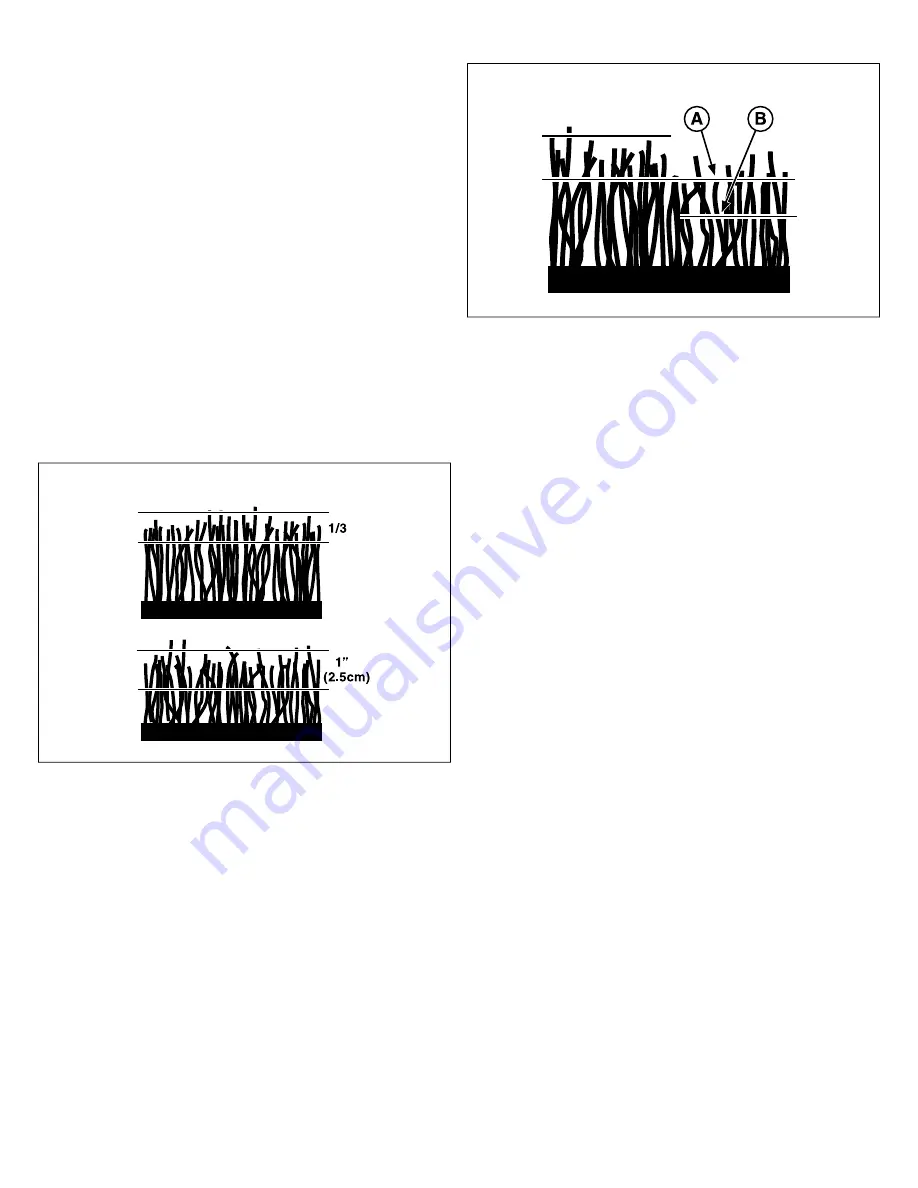
Not for
Reproduction
Height of Grass
Often cutting height is a matter of personal preference. Typically,
you should mow the grass when it is between three and five
inches high. The proper cutting height range for a specific lawn
will depend upon several factors, including the type of grass, the
amount of rainfall, the prevailing temperature, and the lawn’s
overall condition.
Cutting the grass too short causes weak, thin grass plants, which
are easily damaged by dry periods and pests. Cutting too short
is often more damaging than allowing the grass to be slightly
higher.
Letting grass grow a bit longer—especially when it is hot and
dry—reduces heat build-up, preserves needed moisture and
protects the grass from heat damage and other problems.
However, allowing grass to grow too high can cause thin turf and
additional problems.
Cutting off too much at one time shocks the plant’s growth system
and weakens the grass plants. A good rule of thumb is the
1/3 rule: to cut no more than one third of the grass height,
and never more than 1 inch at a time.
13
The amount of grass you are able to cut in one pass is also
effected by the type of mowing system you are using (for
example, broadcasting with side discharge decks can process
a much larger volume of grass than mulching does).
Tall grass requires incremental cutting. For extremely tall
grass, set the cutting height at maximum for the first pass (A,
Figure 14), and then reset it to the desired height and mow a
second (B) or third time.
Don’t cover the grass surface with a heavy layer of clippings.
Consider using a grass collection system and starting a compost
pile.
14
When and How Often to Mow
The time of day and condition of the grass greatly affect the
results you’ll get when mowing. For the best results, follow these
guidelines:
• Mow when the grass is between three and five inches high.
• Mow with sharp blades. Short clippings of grass one inch or
shorter decompose more quickly than longer blades. Sharp
mower blades cut grass cleanly and efficiently, preventing
frayed edges which harm the grass.
• Mow at time of day when the grass is cool and dry. Late
afternoon or early evening often provide these ideal mowing
conditions.
• Avoid mowing after rain or even heavy dew, and never mulch
when the grass is wet (moist grass does not mulch well, and
clumps beneath the mower deck).
Mowing Patterns
Always start mowing on a smooth, level area.
The size and type of area to be mowed will determine the best
mowing pattern to use. Obstructions such as trees, fences and
buildings, and conditions such as slopes and grades must also
be considered.
• Cut long straight strips overlapping slightly.
• Where possible, change patterns occasionally to eliminate
matting, graining or a corrugated appearance.
• For a truly professional cut, mow across the lawn in one
direction, then re-cut the lawn by mowing perpendicular to
the previous cut.
NOTE: Always operate the engine at FULL THROTTLE when
mowing.
If you hear the engine slowing down, you are mowing too
fast—using a slower ground speed will improve the cutting
efficiency of the blades and prevents many common cutting
problems. Use an appropriate ground speed for the thickness
and height of the grass you are cutting (3rd gear or slower for
manual gear models). If you hear the engine slowing down you
are mowing too fast, use a slower ground speed.
18
















































